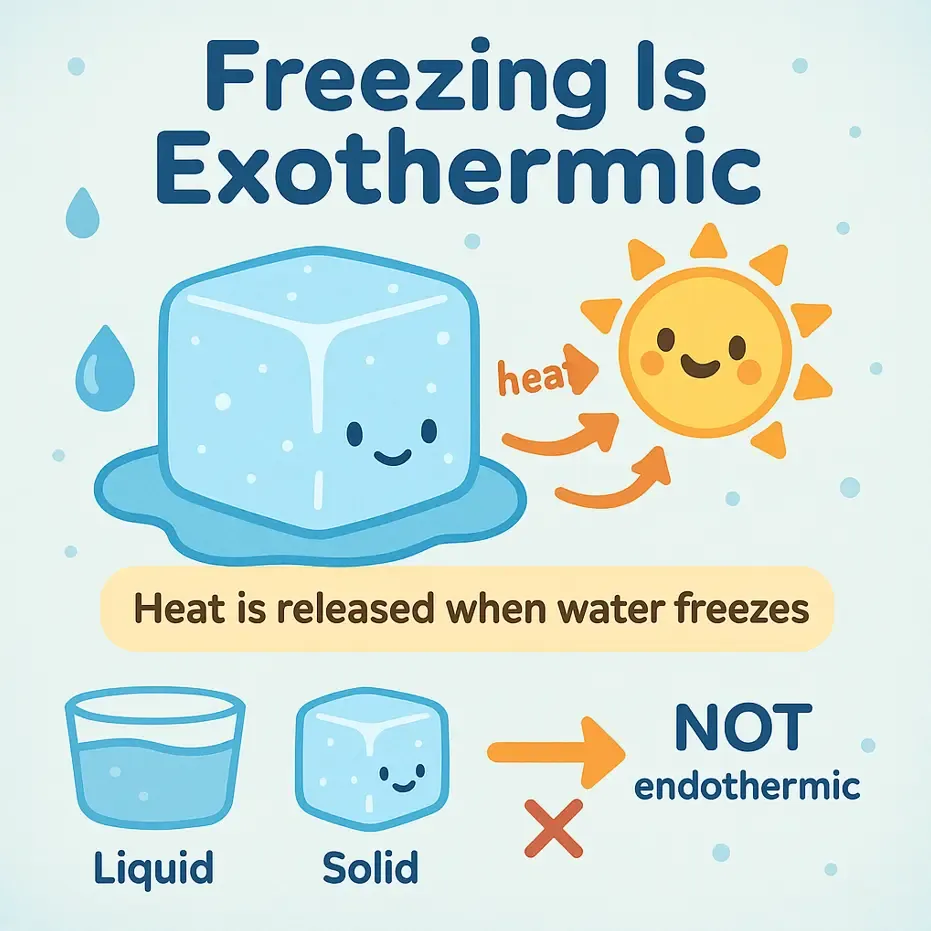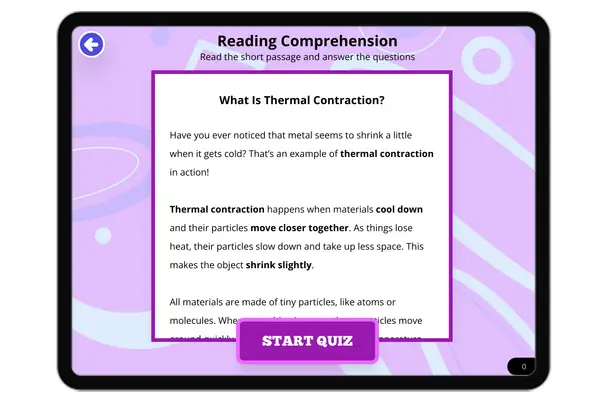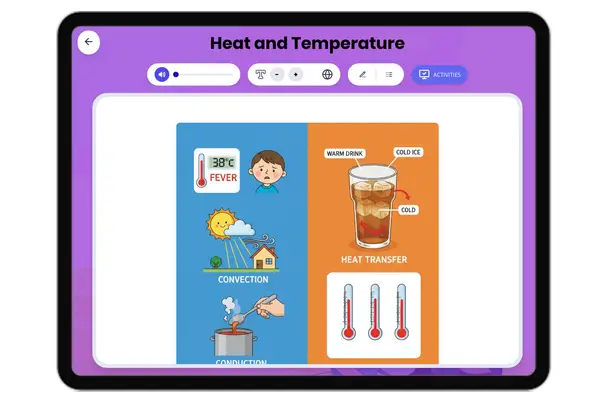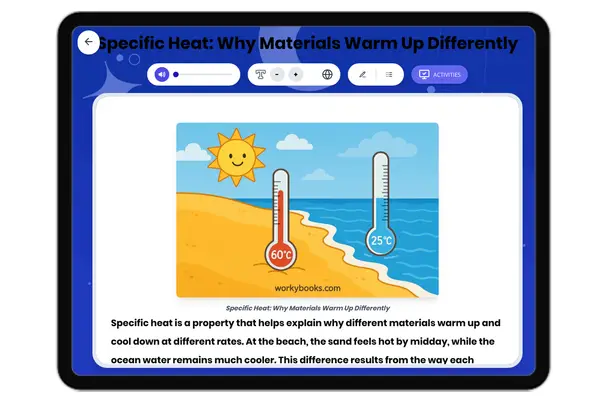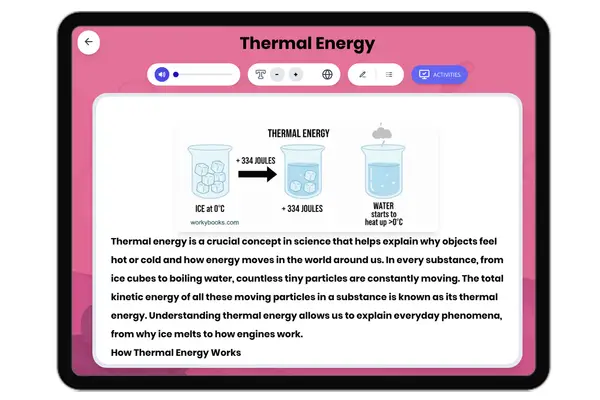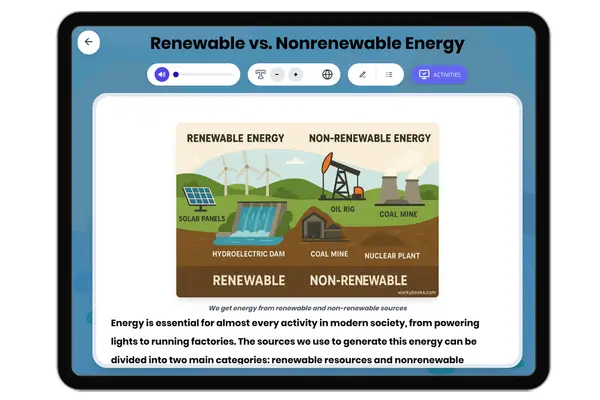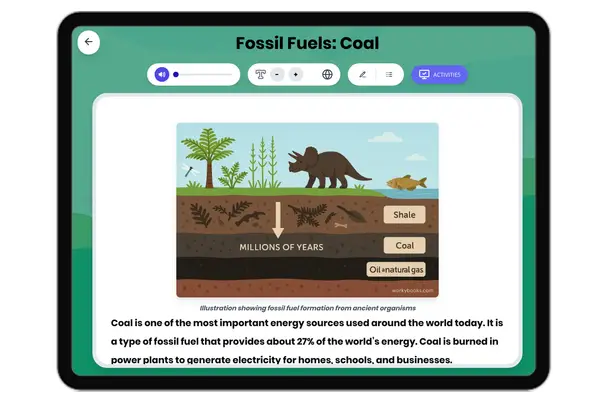Is Freezing Endothermic or Exothermic? — Reading Comprehension
Premium Resource
Grades
- 5
- 6
- 7
- 8
Standards
- MS-PS3-4
- 4-PS3-3
- 4-PS3-2
PRINT+DIGITAL RESOURCE
This learning resource is available in interactive and printable formats. The interactive worksheet can be played online and assigned to students. The Printable PDF version can be downloaded and printed for completion by hand.
About This Reader
This clear and accessible passage helps students understand why freezing is an exothermic process, even though frozen objects feel cold. Aligned with NGSS MS-PS3-4, it explains how water releases heat into the environment as it freezes into ice. Students learn how molecules slow down and form solid structures, and how this process is the opposite of melting, which absorbs heat. The passage uses everyday examples like freezers and frozen lakes to show the role of freezing in nature and technology. Designed to support both science understanding and literacy skills, it integrates key physical science concepts with engaging explanations and vocabulary support.
Perfect For:
👩🏫 Teachers
- • Reading comprehension practice
- • Auto-graded assessments
- • Literacy skill development
👨👩👧👦 Parents
- • Reading practice at home
- • Comprehension improvement
- • Educational reading time
🏠 Homeschoolers
- • Reading curriculum support
- • Independent reading practice
- • Progress monitoring
Reading Features:
📖
Reading Passage
Engaging fiction or nonfiction text
❓
Comprehension Quiz
Auto-graded questions
📊
Instant Feedback
Immediate results and scoring
📄
Printable Version
Download for offline reading
🔊
Read Aloud
Voice-over with word highlighting



